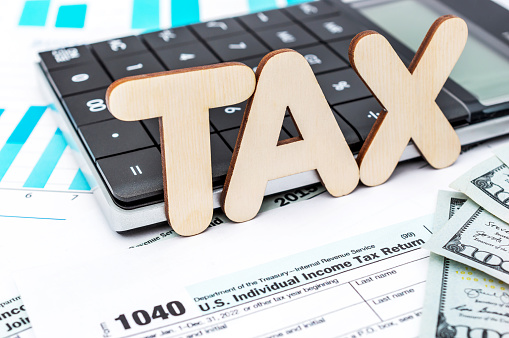Are you familiar with the concept of tax-free? Do you know how it works and can save you money when shopping for clothes and electronics? Fortunately, understanding what is tax-free isn't too difficult – as long as you have a basic knowledge of taxes. We will help break down the details so you can quickly get up to speed on the topic.
We'll discuss who qualifies for tax-free shopping, what types of items are eligible for these discounts, and provide tips on how to save even more through smart tax-free shopping habits. Read on if you're looking to maximize your savings while minimizing your time in line.
Tax-Free Investments

Tax-free investments are financial investments that are not subject to taxation by the federal government. They include taxable and tax-exempt bonds, certain annuities, and municipal bonds issued by state and local governments. They can also include other investments such as life insurance policies, 401(k) plans, 529 college savings plans, and health savings accounts (HSAs).
Generally speaking, these investment products allow investors to grow their money without paying income taxes on their profits. It is important to note that while some tax-free investments may be exempt from federal taxes, they are still subject to state or local taxes in some cases.
Different Types of Tax-Free Investments

There are several different types of tax-free investments available.
- Tax-Exempt Bonds: These municipal bonds issued by state and local governments are exempt from federal income tax but may still be subject to state or local taxes.
- Tax-Advantaged Investments: This includes 401(k)s, 529 college savings plans, health savings accounts (HSAs), and other retirement accounts. These investments allow taxpayers to save for their future without paying taxes on any of the earnings they generate.
- Annuities: These are contracts between an investor and an insurer that guarantee a certain rate of return over a predetermined period, regardless of market conditions. While annuities can be taxable in some cases, there is typically no federal taxation on the earnings they produce.
- Life Insurance Policies: These policies provide a death benefit to the policyholder's beneficiaries upon the policyholder’s death and are typically exempt from taxation.
No matter which type of tax-free investment you choose, it is important to understand how each one works and if it makes sense for your financial situation. It is also important to be aware that all investments carry some risk, and you should always speak with a qualified financial professional before making any investment decisions. Tax-free investing can be an excellent way to save money, but understanding the options available is key to ensuring success.
Advantages of Tax-Free Investing
There are several advantages to tax-free investing, including:
- Lower Taxes: Tax-free investments allow investors to grow their money without paying taxes on their profits, thus providing more money that can be saved or invested in other areas.
- Longer Investment Horizons: With lower taxes comes the ability for investors to leave their investments untouched for longer periods, which can result in higher returns over time due to compounding interest and appreciation of the investment’s value.
- More Freedom: Tax-free investments give investors greater freedom regarding how much they can invest and how often they need to withdraw funds from the accounts they have invested in. This can be especially beneficial for retirement planning, as it gives investors more control over when they need to withdraw funds.
- Higher Returns: Tax-free investments tend to have higher yields than their taxable counterparts, meaning they can give investors a better return on their money.
- Tax-Deferred Growth: Many tax-free investments offer the benefit of tax-deferred growth, which means that any profits made on the investment are only subject to taxation once withdrawals are made from the account. This allows investors to keep more of their profits for longer periods and maximize their returns.
- Diversification: Investing in various types of tax-free investments can help diversify an investor’s portfolio, reducing risk and potentially providing higher returns over time. It is important to remember that all investments carry some risk and that no single investment is a sure thing.
Tax-free investing can be an excellent way for investors to save money and maximize their investment returns. However, it is important to understand the different types of tax-free investments available and the risks associated with each one before making any decisions. With careful planning and diversification, tax-free investments can be an effective tool in helping meet long-term financial goals.
Disadvantages of Tax-Free Investing
There are some potential drawbacks to tax-free investing, including:
- Higher Initial Costs: Tax-free investments typically require a higher initial cost than other types of investments, which means investors may need to invest more money upfront to reap the benefits of the investment.
- Lower Returns: Tax-free investments generally have lower yields than their taxable counterparts, meaning investors may get less out of their investment than they would with a traditional taxable account.
- Lack of Liquidity: Many tax-free investments offer a different level of liquidity than other investments, making it easier for investors to access their funds if needed. Some tax-free investments, such as annuities, have stiff penalties for early withdrawals.
- Inflation Risk: Because tax-free investments are typically long-term investments, there is a risk that the value of the investment will not keep up with inflation and purchasing power over time. This means investors may end up with less money than they would have had if they had invested in a taxable account.
- Limited Investment Options: There are relatively few options available to investors regarding tax-free investments, which can limit their ability to find the best possible return on their money.
Tax-free investing can effectively save money and maximize returns, but it's important to understand all potential drawbacks before making any decisions. A qualified financial professional can help investors determine whether or not taxes.
FAQS
Which amount is tax-free?
The amount of income exempt from taxation depends on the country's tax laws. However, certain types of income, such as capital gains from investments or earned interest, can be tax-free in many countries. Individuals can make up to $11,700 in investment gains in the United States without taxes.
Is investing in tax-free investments worth it?
Whether or not investing in tax-free investments is worth it will depend on an individual's financial goals and overall risk tolerance. Tax-free investments offer the benefit of tax-deferred growth, meaning any profits made on the investment are only subject to taxation once withdrawals are made from the account. This allows investors to keep more of their profits for longer periods and maximize their returns.
Which tax is the cheapest?
The cheapest tax will depend on the country's tax laws. Generally speaking, taxes that are assessed as a percentage of income or wealth are cheaper than taxes on specific items like property or consumption. For example, income tax is much cheaper in many countries than sales tax.
Conclusion
Taxes and what is declared tax-free can be complex. However, taking the time to research exemptions can save you from paying hefty taxes on essential items like rent, food, health care costs, investment income, and more. It's important to review available options in your area each year to ensure savings opportunities are being taken advantage of. Consulting a tax expert may help you find ways to save money.



